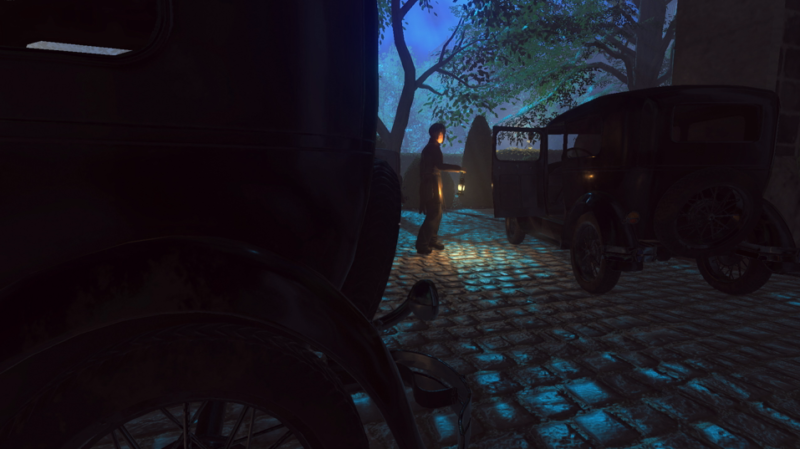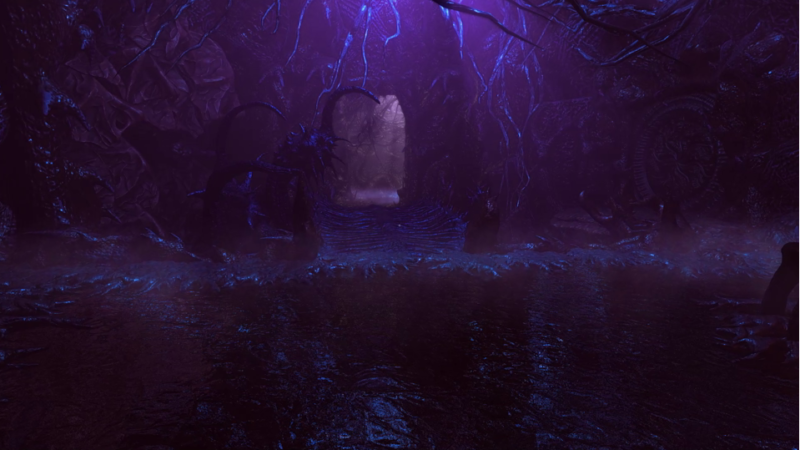
With Valve’s recent decision to take an increasingly laissez-faire stance towards content sold on the Steam marketplace, the quiet yet growing presence of erotic video games available to buy got a boost. Among the newly invigorated genre’s offerings is Lust for Darkness by Movie Games Lunarium, which isn’t quite in the same vein of games attempting to titillate audiences as, say, the Sakura series put out by Winged Cloud, but nonetheless features a liberal amount of skin and sexual content with a demented twist. Imagine Dante’s Inferno but we never get out of the Circle of Lust.

Beyond video games, the horror genre has a long and colorful history of blending with exploitation films and other forms of sensationalist content in order to attract an audience.
Lust for Darkness is a horror game that leans heavily on erotic imagery and themes, which allows it to nestle comfortably among such controversial bedfellows–no pun intended. It isn’t able to stand out from the crowd, really, but it does present an occasionally inspired mishmash of gameplay and horror ideas.

The story opens up promisingly with a woman named Amanda being kidnapped by a mysterious cult leader named Willard. A year after his abduction she manages to sneak a letter to her husband Jonathan, alerting him to her situation and location. Jonathan infiltrates a mansion full of hedonistic cultists who are preparing to open a portal to a strange lust dimension. Willard is the driving force behind wanting to cross over this strange world of Lusst’ghaa, and it turns out to be an unfriendly place to his followers and the unlucky Jonathan, too.

The game is surprisingly short, perhaps 2-3 hours at most. Surprising because it hardly feels like much ground is covered in terms of gameplay or storytelling within that time frame. An inconsistent frame rate, dodgy physics system that makes opening doors and drawers a chore, and generally slow movement speed don’t help matters either. The majority of gameplay is spent on the equivalent of a walking simulator, with a puzzle or action set piece thrown in every so often. Most of these puzzles involve rotating an object to form a picture or lining up multiple pictures together with little to differentiate individual challenges. There’s an emphasis on stealth early on in the game with Jonathan evading the cultists, but this is mostly abandoned right after its introduction. Later, there’s a section where Jonathan needs to wear a mask to avoid being attacked by some demons, but there’s no nuance to the challenge: he puts the mask on and walks straight ahead. There’s a genuinely cool maze puzzle where you need to avoid being seen by some giant eyeballs or the exit will shut, but it’s barely more than a foundation for future puzzles that never materialize. A few sections involve brief chases that involve sprinting away from a demon or cultist down a linear path until reaching an exit. Towards the end of the game this chase concept is actually used a little more cleverly for a boss, and ends up being the one part of its gameplay that Lust for Darkness develops beyond a mere proof-of-concept.

The story is similarly left as a series of plot points that don’t fully develop or necessarily meld into a cohesive package. The opening premise works well enough, but soon degenerates into feeling like an outline more than a story. Willard babbles to Jonathan about his plans and philosophy from the first time they meet, but it feels like he was originally intended to get more scenes and time to gradually fill out his villainous motivations. Amanda is found by Jonathan almost immediately and dumps a fair bit of exposition on him to forward the plot, and then she disappears until the end of the game. Her side of the story is also oddly streamlined and resolves clumsily due to how little screen time she gets. Jonathan himself is an incoherent character due to his emotional whiplashing between scenes that, like Willard and Amanda’s dialogues, feels awkward and hammy. The narrative of Lust for Darkness, much like its gameplay, feels like an abridged version of a potentially more interesting game and story. There are hidden journals and scraps spread throughout the game that attempt to fill in a little more backstory and lore, but they don’t go far enough to excuse the main narrative’s flaws.

The voice acting is a mixed bag, but generally below average. Most of the dialogue receives anywhere from stilted to bored to unintentionally funny deliveries. It doesn’t help that the script is fairly verbose for the cultist characters, who carry on about their otherworldly sex dimension and insights into alien magicks with smug grandiosity. It would take quite a bit of skilled acting to keep those lines from sounding cheesy and pretentious, but the voice cast can’t always manage the job.

The art direction is the real star of the game. Ironically, the nude cultists engaging in their orgies are fairly ugly and uninteresting to look at, despite being the main source of straightforward erotic content in the game. The alien geometries of demonic Lusst’ghaa are much more visually appealing, if somewhat banal in their take on demented hedonism. Phalluses and vaginas await the player around every corner, often presented in dramatic fashion and aiming for shock value. Lusst’ghaa is a very fleshy place, but also has a fair bit of strange machinery that melds with its statues, architecture, and inhabitants. The biomechanical motif is lifted directly from the late surrealist painter H.R. Giger, best known for conceiving the Xenomorph monster from the Alien film series. Also incorporated are other surrealist images, like enormous, pale, staring faces, inspired by Polish artist Zdzislaw Beksinski’s work. The game doesn’t always blend these different inspirations seamlessly, and sometimes it feels more like individual sections are dedicated wholly to Giger or Beksinski. The latter style provides a rare eeriness that at brief times provides a subtler, more disquieting type of horror than the more common in-your-face statue of a machine-demon woman posing suggestively with yet another strange alien dildo.

Lust for Darkness finds itself in a common trap for both erotica and horror of being unable to live up to its provocative and sensationalist trappings. Beyond the surface of nudity and efforts as pushing taboos and controversy, there just isn’t much in the way of interesting gameplay or story. The many moments of brazen nudity and carnal acts of characters quickly become boring and forgettable, lacking in emotion and sensuality as they are. Alien Lusst’ghaa serves as an often engrossing virtual art gallery of sorts, but that’s about it. Perhaps ironically, Lust for Darkness’ obsession with erotic horror imagery leaves its other aspects underdeveloped and the game weaker for it. The appeal truly is only skin-deep.
Score: 4/10
Watch the Lust for Darkness Steam Launch Trailer:
Lust for Darkness is available for PC for $14.99 via Steam.
PC Review
-
Overall Score - 4/104/10
I've been gaming for 22 years, ever since my mom picked up a secondhand NES, and I've played on just about every gaming platform out there since. I think video games are one of most innovative and artistic mediums in the world today, and I'm always curious how developers will surprise me next.





More Stories
Highly Anticipated Post-Apocalyptic MMO FPS, PIONER, Launches on Steam Early Access
DAIMON BLADES Preview for Steam Early Access
ReStory Preview for Steam